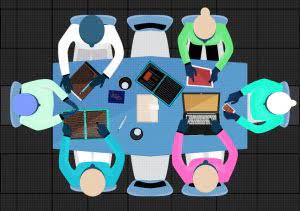
This perspective serves as a general indication of the company’s success. The amount received by X Company from Partner B increased the Cash account by $150,000 and also increased the Equity amount of Partner B by $150,000. We will apply these rules and practice some more when we get to the actual recording process in later lessons. The terms originated from the Latin terms “debere” or “debitum” which means “what is due”, and “credere” or “creditum” which means “something entrusted or loaned”. We’ve been developing and improving our software for over 20 years!
Normal Balance
On the other hand, expenses and withdrawals decrease capital, hence they normally have debit balances. Accounts Payable is a liability account, and thus its normal balance is a credit. When a company purchases goods or services on credit, it records a credit entry in the Accounts Payable account, increasing its balance. Conversely, when the company makes a payment on its account payable, it records a debit entry in the Accounts Payable account, decreasing its balance. By understanding and tracking the normal balance of Accounts Payable, businesses can manage their short-term financial obligations efficiently. A normal balance is the expectation that a particular type of account will have either a debit or a credit balance based on its classification within the chart of accounts.

How Debits and Credits Affect Liability Accounts

The Cash account stores all transactions that involve cash receipts and cash disbursements. By storing these, accountants are able to monitor the movements in cash as well as it’s current balance. Similarly, if a company has $100 in Sales Revenue and $50 in Sales Returns & Allowances (a contra revenue account), then the net amount reported on the Income Statement would be $50. Chartered accountant Michael Brown is the founder and CEO of Double Entry Bookkeeping. He has worked as an accountant and consultant for more than 25 years and has built financial models for all types of industries. He has been the CFO or controller of both small and medium sized companies and has run small businesses of his own.

What is the Normal Balance of Accounts?
An increase in owner investment or business profitability leads to a credit to equity accounts. Examples include Accounts Payable, which are short-term obligations to suppliers for goods or services purchased on credit. Another liability is Unearned Revenue, which occurs when a business receives payment for services or goods before they are delivered, creating an obligation to the customer. When these obligations increase, the liability account is credited. Double-entry means an accounting system in each asset account has a normal credit balance which every transaction is recorded with amounts entered in two or more accounts. Further, the amounts entered as debits must be equal to the amounts entered as credits.
- Consider a scenario where a business purchases $5,000 of equipment by taking a loan and then earns $2,000 in revenue.
- This means that when invoices are received from suppliers, the accounts payable account is credited, and when payments are made to suppliers, the accounts payable account is debited.
- Similarly, when a business receives cash for services rendered, the Cash (asset) account is debited, increasing its balance.
- An increase in owner investment or business profitability leads to a credit to equity accounts.
- Since the debit side of this ledger tracks the balances of all assets, it shows what resources or net worth the business has at a given point in time.
- To get started, let’s review some facts that you should already be aware of as a bookkeeper, accountant, small business owner, or student.
Debits and Credits Outline
As assets and expenses increase on the debit side, their normal balance is a debit. It is the side of the account – debit or credit – where an increase in the account Accounting for Technology Companies is recorded. It should also be noted that debits are always recorded on the left and credits are always recorded on the right.
- Understanding the rules of debits and credits begins with a basic understanding of double-entry accounting and normal balances.
- Understand the fundamental concept of normal balance in accounting.
- These resources are expected to provide future economic benefits, contributing to the business’s operations and profitability.
- For example, if a business purchases supplies on credit, its accounts payable account is credited.
- By recording debits and credits accurately as they occur, a business owner can have a clearer idea of how well the business is performing.
- Assets (what a company owns) are on the left side of the Accounting Equation.
Understanding which accounts have a normal credit balance is crucial for accurately maintaining financial records and preparing financial statements. Each of the other types of accounts, like equity, revenue, and expense accounts, also has a normal balance opposite their respective side (their debit or their credit). Equity represents the owner’s interest in the business, and revenue indicates the inflow of economic benefits. In accounting, understanding how different accounts behave is fundamental to tracking a business’s financial health. A “normal balance” refers to the side of an account (either debit or credit) where increases are recorded. The normal balance is the expected balance each account type maintains, which is the side that increases.
The Normal Balance of Accounts – A Short Guide

These include expenditures https://longus.ru/archives/81019 such as rent, utilities, salaries, and advertising. This is because expenses reduce owner’s equity, which has a normal credit balance, thus requiring a debit to reflect that reduction. For example, when a company pays its monthly rent, the rent expense account is debited.
